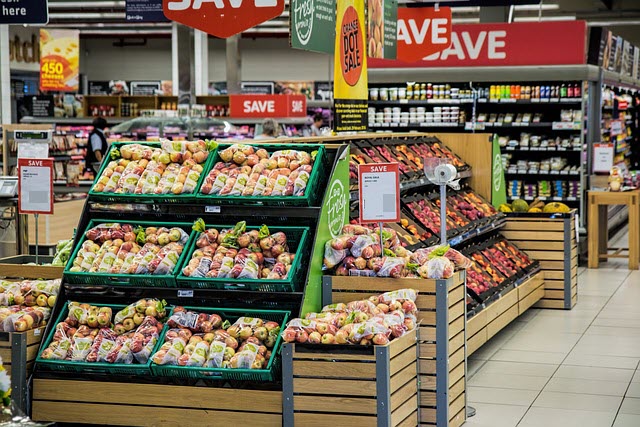Health Food Store Signs

Health food stores play a vital role in promoting wellness, offering natural, organic, and eco-friendly products. Signage in these stores serves as a critical tool to enhance the shopping experience, communicate essential information, and reinforce the store’s brand. Both indoor and outdoor signs are essential for drawing in customers and guiding them effectively once inside. Here’s an overview of the types of health food store signs:
Outdoor Health Food Store Signs
Outdoor signage is the first impression a health food store makes on potential customers. It should be eye-catching, clear, and align with the store’s eco-friendly branding.
1. Storefront Signs
- Features: Prominently display the store’s name and logo.
- Materials: Eco-friendly materials like reclaimed wood, bamboo, or metal with low-VOC paints.
- Purpose: Helps customers identify the store and conveys its natural and sustainable ethos.
2. Window Graphics
- Features: Vibrant images of fresh produce, herbal products, or wellness-related themes.
- Purpose: Highlights the store’s offerings, such as organic produce, vegan products, or supplements.
3. Sidewalk Signs
- Features: Chalkboards or A-frame signs that are easily updateable.
- Purpose: Advertises daily specials, promotions, or upcoming workshops.
4. Parking and Directional Signs
- Features: Clearly marked spaces with eco-conscious messaging.
- Purpose: Ensures ease of access for customers while reinforcing the store’s green values.
5. Banners and Flags
- Features: Temporary banners for grand openings or seasonal sales.
- Purpose: Draws attention to specific events or promotions.
Indoor Health Food Store Signs
Once inside, signage should guide, educate, and enhance the customer’s shopping experience.
1. Welcome Signs
- Features: Positioned near the entrance, often displaying the store’s mission or eco-pledge.
- Purpose: Sets a welcoming tone and reinforces the brand’s commitment to health and sustainability.
2. Wayfinding and Aisle Signs
- Features: Clear, overhead signs that direct customers to different sections like produce, supplements, or bulk goods.
- Materials: Made from sustainable materials, aligning with the store’s eco-friendly theme.
- Purpose: Helps customers navigate the store efficiently.
3. Product Labels and Shelf Talkers
- Features: Mini-signs providing details about a product’s benefits, origins, or certifications (e.g., organic, non-GMO).
- Purpose: Educates customers and assists in decision-making.
4. Promotional Signs
- Features: Highlight discounts, sales, or loyalty programs.
- Purpose: Encourages purchases and builds customer loyalty.
5. Educational Displays
- Features: Signs with health tips, recipes, or information about specific ingredients.
- Purpose: Positions the store as a trusted source of health and wellness knowledge.
6. Checkout Signs
- Features: Reminders about eco-friendly practices, like bringing reusable bags, or calls to action, such as joining a rewards program.
- Purpose: Creates a positive last impression and reinforces sustainable practices.
7. Event and Workshop Boards
- Features: Bulletin boards or digital displays promoting in-store events like cooking classes or wellness workshops.
- Purpose: Builds community engagement and positions the store as more than just a retailer.
Sign Design Considerations for Health Food Stores
Health food stores typically focus on creating a calming and welcoming environment, and their signage should reflect this:
- Fonts and Colors: Use earthy tones, natural textures, and clean, easy-to-read fonts.
- Materials: Opt for sustainable and non-toxic materials to align with the store’s brand values.
- Imagery: Incorporate visuals like fresh fruits, vegetables, and herbal motifs to evoke a sense of wellness.
Signage is an integral part of a health food store’s branding and customer experience. Thoughtfully designed outdoor signs attract and inform potential customers, while indoor signs guide and educate them during their shopping journey. By using sustainable materials and health-conscious messaging, these signs not only communicate vital information but also reinforce the store’s commitment to promoting wellness and eco-friendly practices.

